You only have to read our reviews of Diablo III: Ultimate Evil Edition and Sacred 3 to find out which game is the better action-RPG. Still, both games have been significantly streamlined when compared to the previous entries in their respective series', with much of this design refresh made to better support couch co-op gameplay. With such a thing becoming increasingly rare, let's look at both games to determine not which is the better action-RPG overall, but if one facilitates local, same-screen play better than the other.
Couch co-op games bring different logistical requirements to those that are played online with each player at a separate console or PC. Because of this, we'll be looking at these games through the lens of the following three criteria: how well they support drop-in/drop-out play, how many people can play at once, and how well each game manages the screen space each player needs.
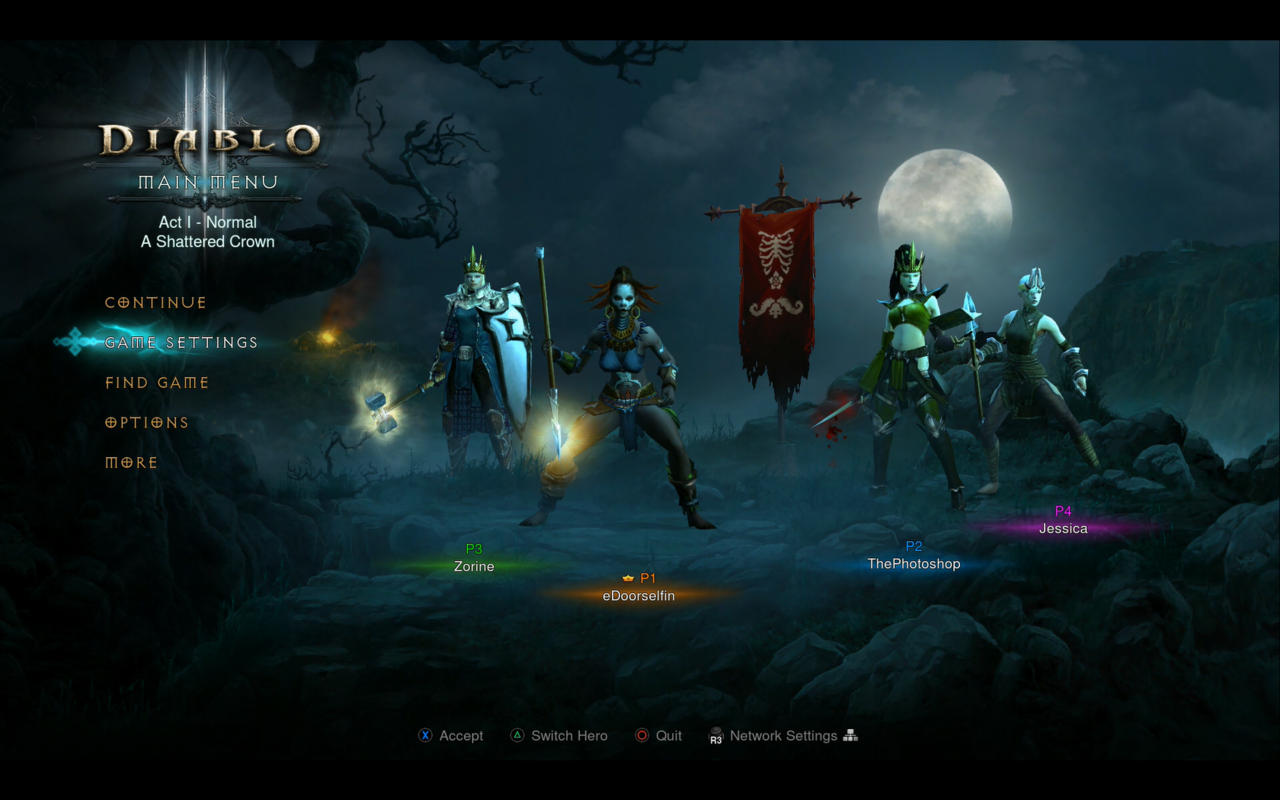
DROP IN, DROP OUT, GET DOWN
With a couch co-op game, all you want to do is flop down on a cushion, boot the game up and get everyone in and playing as quickly as possible. Things like multiple accounts, login screens, connection issues and whether everyone knows what button does what get in the way. In Diablo III, each player on the one console can login with their own PSN or XBLA character, even if they don't own the game--they just need a free PSN or Xbox Live account. If someone doesn't own the game themselves, they can create a new character that is stored locally and boosted to the level of the other players. The important distinction here is that local character only has its stats scaled--it still actually starts at level one. This means it won't die at the slightest touch, and can still dish out some decent damage while waiting for some better gear to drop.
Unfortunately, that gear is still locked behind level requirements. Though this local character will quickly find better weapons and armour, they won't be able to actually wear it for a while. What results is a character that feels underpowered for about an hour, but this passes after they are quickly power-levelled by the other party members.
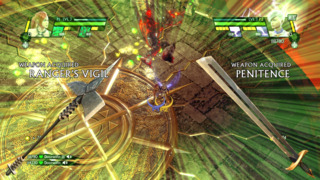
Sacred 3 does a better job of this. However, this is due to the fact that its own loot system, and class customisation, has been streamlined even further than that of Diablo III's. Sacred 3 only rewards new loot at the end of each quest, and because that loot is rewarded at a fixed time in a character's progression, there's no need for it to have a level requirement. Similarly, skills in Sacred 3 are unlocked in a fixed order. Because of this, Sacred 3 doesn't require its second player to ever save their character; when dropping in, they select their class to create a brand new character each time and are immediately scaled up to the party leader, without any adverse side effects like those suffered in Diablo III. For couch co-op, this works far better.
FRIENDS 4 LIFE
It bears mentioning that Diablo III supports four players in couch co-op, while Sacred 3 only supports two. In order to reach Sacred 3's maximum player count of four, you need to be playing online. However, you can still use the second player's locally-created character in online play, thereby allowing two people per-console or per-PC to play in a single game.
Diablo 3's support for mixing local characters with online play is less straightforward. On current-gen consoles, at least one player needs to have an Xbox Live Gold or PlayStation Plus subscription to let locally-created characters play in online games. On PS3, PlayStation Plus is not required at all, and local characters can play online without any issues. On Xbox 360, every player needs their own Xbox Live Gold subscription to play online, otherwise the game will be forced into LAN mode, which means you can't play against other people. Depending on your setup, these restrictions could be limiting if you and a buddy want to play against two other distant friends. But, given that we're looking at how well each game supports couch co-op specifically, the ability to have four players on the one console puts Diablo III in the lead.
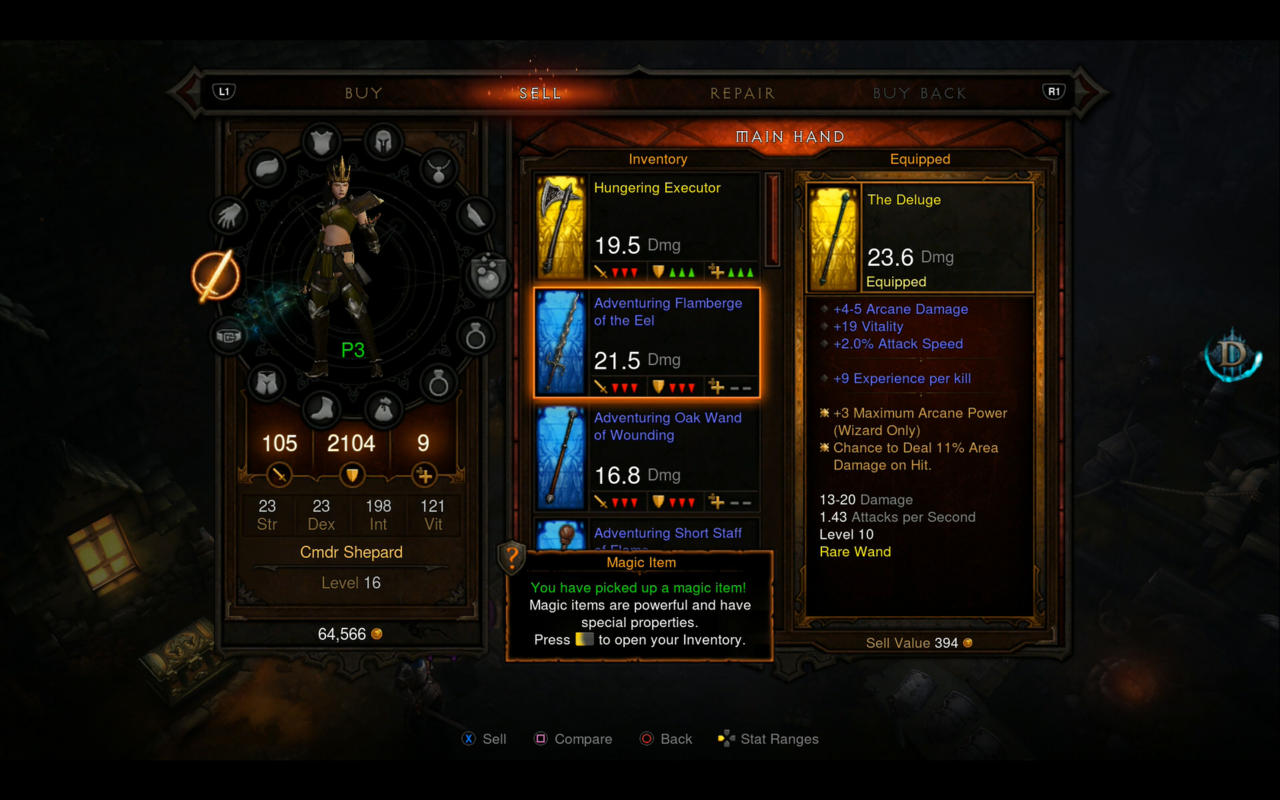
VIRTUAL REAL ESTATE
Inventory management plays a major part in Diablo III. For the console versions, only one player is able to view their full inventory screen at a time, thereby making other players wait their turn until they're done fiddling with weapons and magical runes. This completely interrupts gameplay and quickly becomes tedious. To compensate for this, a barebones list of new items is available to cycle through on the directional pad without bringing up a full-screen window. However, not enough information is displayed about the exact stat bonuses each item provides, and it's difficult to get a sense of what each new rune does from this menu alone. It's inevitable that each player will eventually have to stop everything and sort through their full inventory at regular intervals. This routine rapidly becomes tiresome.
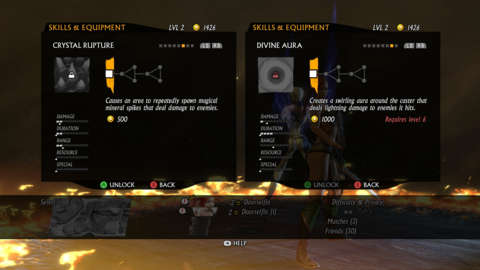
Sacred 3's streamlining makes its own inventory management far less of a headache for other players. Because new items and skill modifiers are only unlocked at the end of each quest--never during combat--the game provides a set moment for you to manage your inventory, at the only time you'll ever need to manage it. Further to this, both players in couch co-op mode can see and sort through their own inventories on the screen at the same time as each other, with no need to stop and take turns. This is a far less painful experience than that of Diablo III, but it's one that's likely made possible because of its streamlined approach to loot and skill selection.
While Sacred 3 makes headway in the inventory management space, Diablo III does a far better job of managing each character's physical location during combat and exploration. The game will smartly teleport any player who wanders too far to the edge of the screen back toward the rest of the party. Because all players need to be kept on screen, this means that one player can walk away to get a snack, and the others can continue exploring because the absent player will be teleported along with the group. Sacred 3 includes no such system, so if one player stands idle at the edge of the screen, the other player will be completely unable to move forward until they return.
ENDING THE CRUSADE
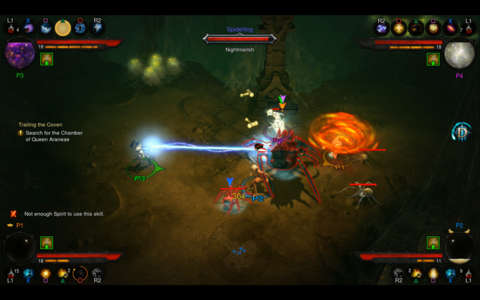
Though Diablo III is a superior action-RPG to Sacred 3, whether it’s a better couch co-op game isn’t as immediately apparent. Having four players take on the Prime Evil on the same console makes for a great time, but it’s time beset by constant inventory management interruptions and the need for all players to have their own characters for the smoothest result. Sacred 3’s lack of four-player support on a single system is annoying, but if you’re only planning on playing with a single friend, then Sacred 3’s streamlining makes for a more painless couch co-op experience.

